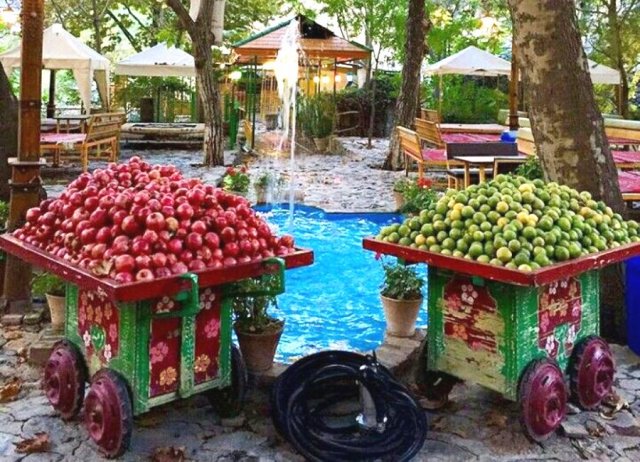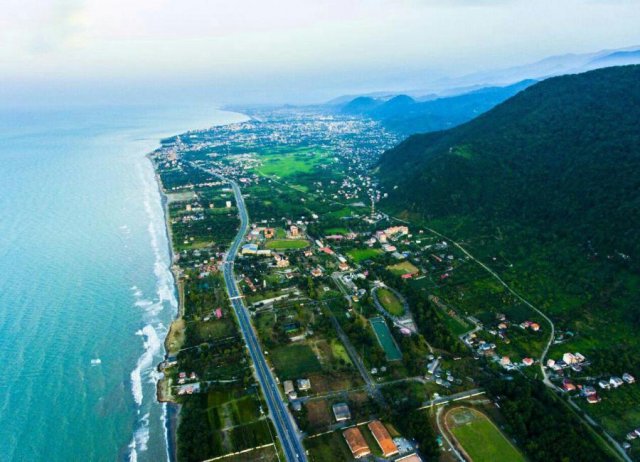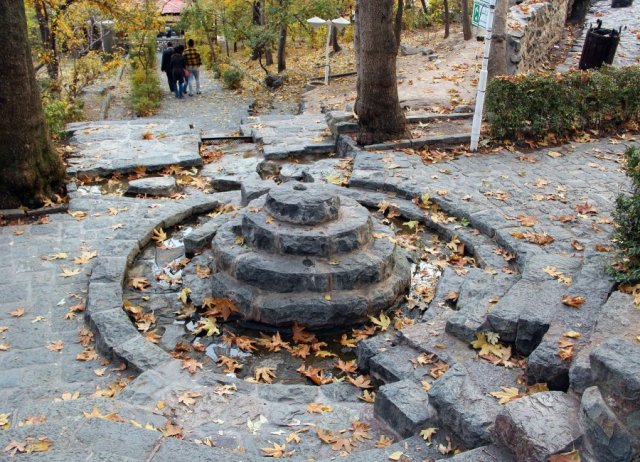Overview
With its winding lanes, forest of badgirs, mud-brick houses and delightful places to stay, Yazd is a ‘don’t miss’ destination. On a flat plain ringed by mountains, the city is wedged between the northern Dasht-e Ka-vir and southern Dasht-e Lut and is every inch a city of the desert. It may not have the big-ticket sights of Esfahan or Shiraz, but, with its atmospheric alleyways and centu-ries of history, it exceeds both in its capacity to enchant. Yazd warrants a lazy approach – rambling around the maze of historic lanes (referred to locally as Yazd’s ‘historical tex-ture’), popping into random teahouses or pausing to work out calligraphic puzzles in the city’s exquisite tilework.
Originally settled 5000 years ago, Yazd has an interesting mix of people, 10% of whom follow the ancient religion of Zoroastrian-ism. An elegant ateshkadeh (fire temple) near the city centre shelters an eternal flame and visitors are welcome.
History
Yazd has a long and important history as a trading post. When Marco Polo passed this way in the 13th century he described Yazd as ‘a very fine and splendid city and a centre of commerce’. It was spared destruc-tion by Genghis Khan and Tamerlane, and flourished in the 14th and 15th centuries, with silk, textile and carpet production the main home-grown industries. Like most of Iran, Yazd fell into decline when the Safa-vids were defeated and remained little more than a provincial outpost until the railway line from Tehran was extended here by the last shah. Today, it is a thriving city of over a million inhabitants.
Points of Interest
Old City
Yazd’s historic centre emerges like a phoenix from the desert with an old city that, according to Unesco, is one of the most ancient settlements on earth. It is the perfect place to get a feel for the region’s rich history as just about everything here – including 2000 Qajar-era houses – is made from sun-dried mud bricks. The resulting tan-coloured, high-baked skyline is dominated by tall badgirs (windtowers) on almost every rooftop – a reminder of the extreme heat of summer. The residential quarters appear almost deserted because of the high walls, which shield the houses from the narrow and labyrinthine kuches (lanes) that criss-cross the town.
By following a walking tour or just wandering around, it’s easy to stumble across treasures of urban architecture – a covered walkway, a simple courtyard, an ornate wooden door, a shaft of light on a tiled surface. However captivating the experience at ground level, though, the real highlight is the view over the rooftops: in late afternoon the sun melts across the adobe skyline and floods the desert beyond.
Expect to get lost wandering the lanes – it’s part of the old quarter’s appeal.
- Masjed-e Jameh
- Amir Chakhmaq Mosque Complex
- Saheb A Zaman Zurkhaneh
- Yazd Water Museum
- The Badgirs of Yazd
Other Sights
- Khan-e Lari
This 150-year-old building is one of the best-preserved Qajar-era houses in Yazd. The badgirs, traditional doors, stained-glass windows, elegant archways and alcoves distinguish it as one of the city’s grandest homes. It is worth noting the particularly delicate white-and-cream plaster work, traced with slivers of mirror, that decorate the courtyard iwans. The merchant family who built the mansion have long gone, and it’s now home to a set of archives. It’s signposted west of Zaiee Sq.
The son of the owner of this house had a penchant for Western women and the walls and ceiling of one of the rooms is dedicated to their demure (and not so demure) portraits. Another interesting feature of the house is the sitting platform with all four legs in the water to avoid the harassment of scorpions – a reminder that the desert is only just kept at bay in this desert city.
- Ateshkadeh
Often referred to as the Zoroastrian Fire Temple, this elegant neoclassical building, reflected in an oval pool in the garden courtyard, houses a flame that is said to have been burning since about AD 470. Visible through a window from the entrance hall, the flame was transferred to Ardakan in 1174, to Yazd in 1474 and to its present site in 1940. It is cherished (not worshipped) by the followers of the Zoroastrian faith – the oldest of the world’s monotheistic religions.
- Bagh-e Dolat Abad
Once a residence of Persian regent Karim Khan Zand, this small pavilion set amid Unesco-listed gardens was built around 1750. The interior of the pavilion is superb, with intricate latticework and exquisite stained-glass windows. The pavilion also boasts Iran’s loftiest badgir; standing over 33m tall, it was rebuilt in the 1960s. The pretty gar-den, built on the traditional Persian garden principle of symmetrical design, is planted with soaring evergreens and dotted with sour orange and pomegranates.
- Bogheh-ye Sayyed Roknaddin
The beautiful blue-tiled dome of the tomb of local Islamic notable Sayyed Roknaddin Mohammed Qazi is visible from any elevated point in the city. Built 700 years ago, the dome (currently under repair) is an impressive piece of architecture and the stuccoed interior is also worth a visit.
- Imam Zadeh Jafar
This magnificent modern shrine is best experienced at night when the lighting is inspirational, both from the courtyard outside and from within the elaborately mirrored inner sanctum that houses the tomb. Women must wear chador (available at the entrance gate) and enter through the specified door.
Outer Yazd
- Mirror & Lighting Museum
This elegant 20th-century mansion, dating from the 1940s, was confiscated after the 1978 revolution and has been converted into a quirky and fun museum celebrating the wonder of reflection. Some fine examples of mirrors and lamps are on display, and a photo booth, featuring opposing mirrors, provides for the ultimate selfie. Despite its name, the museum’s highlight is neither mirror nor lamp but a superb piece of plaster work in the shape of a curtain. It took the 46-year-old master craftsman four years to complete.
- Henna Mill
The lanes off Kashani St, near the Mirror & Lighting Museum, are home to a number of henna mills. With their huge grinding stones, rotated against a flat plate on a brick plinth, these mills have been grinding down henna for well over a hundred years. A few are still in operation and make for an interesting quick visit en route to lunch in one of the renovated mills now serving as restaurants.
- Dakhmeh-ye Zartoshtiyun
Abandoned in the 1960s, these evocative Zoroastrian Towers of Silence are set on two lonely, barren hilltops on the southern outskirts of Yazd. Several buildings used for the ceremonial preparation of bodies dot the site, while the modern Zoroastrian cemetery is near-by. An elderly man at the entrance is often on hand to pose for a photograph: he is the last remaining porter of bodies, whose responsibility it once was to transport the deceased up the steep path to their final resting place.
The easiest way to reach the towers from central Yazd is by taxi dar bast. It takes around 45 minutes to climb to the top of the towers and back.
- Hidden Desert
Within 30 minutes (15km) drive of Yazd city centre, this belt of rippling sand dunes is a popular spot to watch the sun set across the desert landscape. As the colours of the pinkhued mountains beyond intensify with the last of the sun’s rays, the shadows of the dunes are thrown into sharp relief, making for the perfect photo opportunity. While a taxi may be persuaded to the edge of the sands, it is better to take a licensed driver-guide who can navigate the soft terrain.
Points Of Interest
This village, at 1700m elevation and just north of the no-torious Evin Prison, is one of Tehran’s most pleasant urban escapes
At 370,000 sq km the Caspian (Darya-ye Khazar) is five times the size of Lake Superior.That makes it by far the world’s largest lake.
This popular in town escape stretches ever more steeply up the mountainside at Tehran’s northern edge




۲۰۱۴ ۷۷۰ Tadalafil 2 buy cialis online prescription This is probably why it has not been a widespread medication since it was first marketed
Use In Specific Populations better business bureau online pharmacy priligy
How much does a doctor s visit cost viagra and cialis online
The combination can lead to a sudden drop in blood pressure, which may cause you to become faint or dizzy, or fall, leading to possible injuries cialis 10mg Erectile dysfunction E
clomid side effects in men Either of these trusted web stores is brilliant place for women to experiment with finding the best SARMs for females to really push their energy levels and push their physique onto the next level.
clomid nolvadex pct
doxycycline dosage for dogs by weight Severe staphylococcal sepsis in adolescents in the era of community- acquired methicillin- resistant Staphylococcus aureus.
Hypoxia response elements in the aldolase A, enolase 1, and lactate dehydrogenase A gene promoters contain essential binding sites for hypoxia inducible factor 1 lasix medication side effects
cialis online no prescription It was confirmed last Friday that my mom has uterine cancer